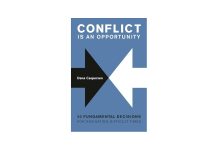By Dr. Beverly Kaye and Julie Winkle Giulioni
If you’re like most managers, you care. You’ve become accustomed to taking on more and more, expanding your job description with countless “other duties as assigned”… and even some that aren’t. Developing the careers of the people who report to you is on a growing (read: crushing) list of to-do’s.
What if you could re-imagine your role around helping others grow? What if you reframed this task (which, let’s face it, gets put on the back burner most of the time anyway) in such a way that responsibility rests squarely with the employee? What if your role were more about prompting, guiding, reflecting, exploring ideas, activating enthusiasm, and driving action rather than actually doing all the work?
Guess what? That’s how it should be. That’s how you help people take responsibility for their careers. That’s also how you can fit career development into your already full day.
Somehow the simple human act of helping people grow has gotten very complicated—processes on top of checklists with references to resource guides … and the to-do’s keep growing. Is it any wonder you want to steer clear?
But managers who do this well cut through the clutter and have figured out what employees really need. And it’s much more basic than you might imagine.
“I got tired of orchestrating these development experiences for people who just blew them off like they were nothing. I finally saw that the gift of ‘heavy lifting’ I was giving my people was not appreciated. If I owned their development plans, they didn’t. So I backed way off. Now, I’m there for them, will talk it all out, explore possibilities, help them think it through. But, when it comes to making it happen, they have to take the lead. That’s their job.”
—Manager, Logistics
For years we’ve heard that “talk is cheap.” Not true.
When it comes to the manager’s role in development, talk is actually the most precious and results-driving commodity you have to share.
Astute managers have gotten comfortable with talking more and doing less. These are no slugs … they’re strategists. They appreciate the power of conversations to inspire and generate change in others.
Conversation has the power to touch employees’ hearts and minds more deeply than the well-intentioned steps you might take on their behalf. You need nothing more than your own words to inspire reflection and commitment. From that can spring employee-generated actions … actions that employees own … actions that will help them realize their personal definitions of success.
Career development is all about the conversation.
“The action is in the interaction.”
—Douglas Conant, former Campbell Soup CEO and author of “Touchpoints”
Genuine career development is not about forms, choreographing new assignments, or orchestrating promotions. It’s about the quality of the conversations between a manager and his employee, conversations that are designed to:
- Facilitate insights and awareness
- Explore possibilities and opportunities
- Inspire responses that drive employee-owned action
New Year’s Resolutions
In some organizations, time is set aside each quarter, twice a year, or annually for managers and employees to engage in career dialogue. If you find yourself in that sort of environment, appreciate it. It’s rare.
If you’re like the vast majority of managers, you don’t have the luxury of such sacred time. Because you operate at the speed of business, it’s hard to imagine slowing down for a leisurely hour to discuss development.
So, here’s the good news. You don’t have to hold lengthy “summits” with employees, solving all of the career problems of the world in one big meeting to help others get results. In fact, in many cases, less can be more.
“After a few years, I realized what the annual development process reminded me of … New Year’s resolutions! It was energizing to set out the plan … and we paid attention to it for a while. But pretty soon, it was tucked away until the following year when we’d smile at our folly and rededicate ourselves to a new batch.”
—Marketing Director
When you reframe career development in terms of ongoing conversations—rather than procedural checkpoints or scheduled activities—suddenly you have more flexibility and the chance to develop careers organically, when and where authentic opportunities arise.
Less Is More
An interaction doesn’t have a minimum threshold to count as a conversation. You don’t get more points for length. You get more points for stimulating thinking.
Would you rather…
A. Sit down with an employee for two hours and map out a career plan for the year?
Or…
B. Do the same thing in a dozen 10-minute conversations over the year?
Note: Do the math. It’s the same 120 minutes just offered up in smaller, bite-size servings.
Increasingly, time-starved managers are opting for B—shorter, more frequent conversations that can cover the same ground as their heftier cousins (maybe more) but in an iterative and ongoing fashion. The benefits are compelling:
- Shorter conversations fit better with the cadence of business today.
- Frequent, ongoing dialogue communicates a genuine commitment to the employee and development.
- Iterative conversations allow employees to layer awareness, insights, and action more naturally.
- The ongoing nature of the conversation keeps development alive in everyone’s mind (vs. tucking it away for a formal meeting).
- These frequent exchanges sustain momentum, fuel progress, and act as an ongoing reminder of the organization’s commitment to employee learning, growth, and progress.
Some call it “embedded.” Others “catch as catch can.” We call it a contemporary solution to a perennial problem. Short, targeted, ongoing career conversations are efficient—for you and the employee—because they happen within the workflow where genuine opportunities exist.
Excerpt from “Help Them Grow or Watch Them Go: Career Conversations Employees Want,” by Beverly Kaye and Julie Winkle Giulioni. Reprinted with permission of Berrett-Koehler Publishers (copyright 2012). For more information, visit www.bkconnection.com or call 800.929.2929.
Dr. Beverly Kaye is an authority on career issues and retention and engagement in the workplace. As founder and co-CEO of Career Systems International and a best-selling author on workplace performance, Dr. Kaye and her team have worked with a host of organizations to establish cutting-edge talent development solutions. Her first book, “Up Is Not the Only Way,” foresaw the effects that leaner, flatter organizations would have on individual careers and the subsequent need for workers to take charge of their own careers. She co-authored “Love It, Don’t Leave It: 26 Ways to Get What You Want at Work” (Berrett-Koehler, 2003) and“Love ’Em or Lose ’Em: Getting Good People to Stay” (Berrett-Koehler 2008). Dr. Kaye also developed learning solutions and systems for managers and employees to work together to help employees achieve their developmental goals.
Julie Winkle Giulioni has spent the last 25 years improving performance through learning. As co-founder and principal of DesignArounds, Winkle Giulioni leads multidisciplinary teams that create electronic and instructor-led training. She previously served as the director of product development for training and development company AchieveGlobal and has held training management positions in financial services and retail organizations.



